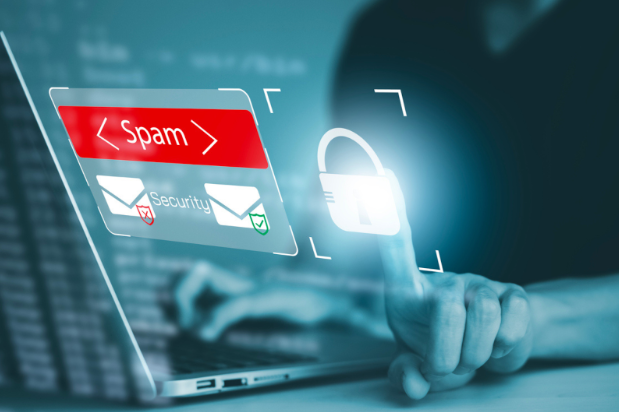In the vast landscape of cyber threats, one term that continues to pose a significant risk is “phishing.” Phishing attacks are deceptive attempts to acquire sensitive information, such as usernames, passwords, and financial details, by posing as a trustworthy entity.
The impact of these attacks can range from personal data breaches to corporate espionage, making it crucial for individuals and organizations alike to be well-versed in recognizing and thwarting such attempts. Find out how to recognize phishing attacks, decipher their methodologies, and protect yourself against them.
How Phishing Works?
Phishing operates by luring individuals through diverse methods, utilizing social engineering tactics to exploit human psychology. Cybercriminals adeptly capitalize on trust and curiosity, manipulating targets into divulging sensitive information.
The strategy involves creating a false sense of security or urgency, prompting individuals to act impulsively. By playing on these psychological triggers, phishers aim to trick people into providing confidential data, such as passwords or financial details.
Understanding the manipulation tactics employed in phishing attacks is essential for individuals to recognize and thwart these deceitful attempts, fortifying their defenses against cyber threats.
Real-life Examples
Analyzing significant phishing incidents underscores the gravity of the issue. Instances where phishing attacks have succeeded resulted in substantial data breaches, financial losses, and compromised reputations. Phishing schemes pose serious repercussions, as these incidents illustrate.
The aftermath of effective attacks can extend beyond financial harm to include the tarnishing of an individual’s or organization’s reputation. Understanding the real-world consequences emphasizes the critical need for robust cybersecurity measures and heightened awareness to safeguard against the detrimental impacts of phishing in our increasingly interconnected digital landscape.
Common Phishing Techniques
Email Phishing
Email phishing stands out as a pervasive and cunning technique employed by cybercriminals. In this method, deceptive emails are crafted, carefully imitating trustworthy sources to deceive recipients.
The goal is to manipulate individuals into divulging sensitive information, such as usernames and passwords. These fraudulent emails often appear convincing, making it challenging for recipients to discern the malicious intent behind them.
As a result, users must exercise caution, scrutinizing emails for any signs of irregularities, and verifying the legitimacy of senders to thwart the insidious attempts of cybercriminals. Vigilance in recognizing these deceptive emails is crucial for maintaining online security.
Spear Phishing
Spear phishing adopts a highly targeted strategy, tailoring messages for specific individuals or organizations. A spear-phishing campaign requires meticulous research to create convincing and personalized messages.
Cybercriminals delve into the target’s background, preferences, and affiliations, allowing them to craft emails that appear highly authentic. Spear phishing exploits the trust and familiarity between the sender and recipient by using this tailored approach.
This sophisticated technique underscores the importance of individuals and organizations remaining vigilant and implementing robust security measures to counteract such personalized and potentially harmful cyber threats.
Smishing and Vishing
In the age of smartphones, phishing has undergone a transformation, extending its reach to include text messages, known as smishing, and voice calls, referred to as vishing. These alternative methods go beyond the conventional email-based phishing attacks.
Vishing uses voice calls to trick recipients into divulging confidential data through smishing text messages. By exploiting vulnerabilities in various communication channels, cybercriminals broaden their tactics, recognizing that individuals may be less guarded in these non-traditional contexts. It reinforces the need for comprehensive cybersecurity measures to protect against phishing threats.
Recognizing Phishing Attempts
Suspicious Email Addresses
When navigating emails, it’s crucial to meticulously examine the sender’s email address. Phishers frequently employ addresses that mimic reputable entities, incorporating subtle misspellings or alterations.
These deceptive tactics aim to create an illusion of legitimacy, making it challenging for recipients to discern the fraudulent nature of the email. By scrutinizing email addresses for any irregularities, such as slight misspellings or unexpected alterations, individuals can enhance their ability to identify potential phishing attempts.
This vigilant approach adds a layer of defense against falling victim to deceptive emails and reinforces the importance of thorough email scrutiny in maintaining online security.
Generic Greetings
Phishing emails commonly employ generic greetings, steering clear of personalized salutations. Authentic communications from reputable sources typically address recipients by their names, reflecting a more personalized and legitimate approach.
Cybercriminals often opt for generic greetings, such as “Dear Customer” or “Dear User,” to cast a broad net and avoid the need for specific details. Recognizing this pattern can be instrumental in identifying potential phishing attempts.
Authentic messages, on the other hand, tend to use the recipient’s name, adding a layer of personalization that enhances trust. Therefore, being attentive to the greeting structure can be a key factor in discerning the authenticity of an email.
Urgent Requests and Unusual URLs
Exercise caution when encountering urgent requests for sensitive information. Phishing attempts frequently leverage a sense of urgency to coerce individuals into divulging confidential details.
Be skeptical of unexpected or high-pressure demands, especially if they involve personal or financial data. Moreover, when faced with hyperlinks in emails, take a moment to hover over them. At first glance, disguised links may appear legitimate but lead to malicious sites.
Hovering over the link reveals the actual destination URL, allowing you to assess its legitimacy before clicking. This simple yet effective precautionary measure adds an extra layer of defense against falling victim to phishing schemes.
Protective Measures
Use of Security Software
Enhancing your digital defense involves deploying robust antivirus and anti-phishing software. These tools contribute an additional layer of protection by actively detecting and neutralizing potential threats.
An antivirus tool detects and removes malicious software, while an anti-phishing tool targets deceptive attempts to steal sensitive data. By incorporating these protective measures into your cybersecurity arsenal, you significantly bolster your resilience against evolving online threats.

Regularly updating and utilizing reputable antivirus and anti-phishing solutions forms a proactive strategy, ensuring a robust defense mechanism against the ever-present risk of cyber attacks.
Two-Factor Authentication
Enhancing your digital security involves implementing two-factor authentication (2FA), a powerful measure that goes beyond the traditional reliance on passwords. Additional steps beyond entering a password are required with 2FA to increase the level of security.
A second form of identification may be required, such as a special code sent to your mobile, a fingerprint scan, or a security token. By incorporating this dual-step verification process, even if a password is compromised, unauthorized access is thwarted, significantly raising the overall security posture. In today’s digital landscape, 2FA offers an effective defense against unauthorized access.
Regular Security Training
Continuous security training is advantageous for both individuals and organizations. Educating users about the latest phishing tactics plays a pivotal role in enhancing overall cybersecurity.
By staying informed about evolving threats and understanding the tactics employed by cybercriminals, individuals can develop a heightened sense of awareness. This knowledge empowers them to recognize and respond effectively to phishing attempts, reducing the risk of falling victim to deceptive schemes.
Similarly, organizations benefit from cultivating a security-conscious culture among their employees, establishing a proactive defense against the dynamic landscape of cyber threats. Ongoing security training serves as a valuable investment in fortifying the collective resilience against potential security breaches.
Contact VWD Today!
In a digitally interconnected world, understanding and countering phishing attacks are paramount. By staying up-to-date, implementing security measures, and fostering a collective defense, individuals and organizations can effectively mitigate the risks associated with phishing.
Getting help from Venice Web Design is the right option to avoid this type of phishing attack. VWD can provide comprehensive security assessments, training, and ongoing support to ensure that your organization is protected from phishing and other malicious attacks.


